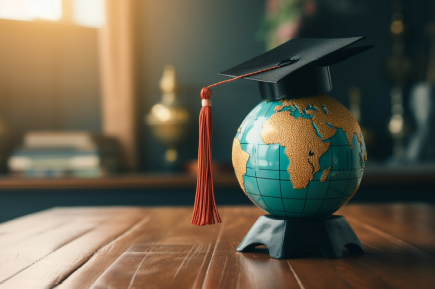Kenitra Newman of California has many responsibilities, but none more important than her role as a mother. Kenitra Newman of California believes raising children to be global citizens is essential in an increasingly interconnected world. Global citizenship goes beyond knowing geography or speaking multiple languages; it encompasses understanding, empathy, and respect for diverse cultures and perspectives. One powerful way to foster these qualities in children is through cultural immersion. By exposing children to different cultures early on, parents and educators can lay the foundation for them to become compassionate, open-minded individuals who appreciate and contribute positively to our diverse world.
Kenitra Newman of California on Understanding Cultural Immersion
Cultural immersion is the act of experiencing and engaging with a culture firsthand rather than just observing it from a distance. It involves going beyond tourist attractions and surface-level interactions to delve into the customs, traditions, language, and everyday life of a community. Children can gain deep insights and develop meaningful connections with people from different backgrounds by participating in cultural events, connecting with diverse communities locally, hosting international guests, or traveling. Cultural immersion provides them with valuable opportunities to broaden their horizons and learn about different ways of life.
Kenitra Newman of California on The Benefits of Cultural Immersion for Children:
- Cultural Understanding: Experiencing different cultures firsthand helps children develop a nuanced understanding of the world beyond their immediate surroundings. They learn to appreciate the similarities and differences among cultures, fostering tolerance and respect.
- Empathy and Perspective-Taking: Immersing children in diverse cultural environments allows them to see the world through the eyes of others. This cultivates empathy and perspective-taking skills as they learn to recognize and empathize with the experiences, challenges, and joys of people from different backgrounds.
- Language Acquisition: Exposure to different languages during cultural immersion provides an ideal environment for language learning. Children’s natural curiosity and adaptability enable them to pick up new languages more easily, enhancing their communication skills and cultural fluency.
- Open-Mindedness and Adaptability: Cultural immersion challenges children to step outside their comfort zones and adapt to new environments, customs, and ways of thinking. This fosters flexibility, open-mindedness, and resilience, essential qualities for navigating an ever-changing, interconnected world.
- Global Awareness and Citizenship: By experiencing firsthand the interconnectedness of our world, children develop a sense of global awareness and responsibility. They understand that their actions can have far-reaching impacts and are motivated to contribute positively to local and global communities.
Kenitra Newman of California on Practical Strategies for Cultural Immersion
- Traveling as a Family: Whether it’s exploring a different country or visiting cultural festivals and events, traveling exposes children to new sights, sounds, and experiences. Encourage them to interact with locals, try new foods, and participate in cultural activities to make the most of their travel experiences.
- Hosting Cultural Exchanges: Hosting international guests or participating in exchange programs allows children to learn about different cultures firsthand without leaving home. Encourage them to ask questions, share their own culture, and form meaningful connections with their guests.
- Community Involvement: Get involved in cultural organizations, community events, and volunteer opportunities that celebrate diversity. Attend cultural performances, festivals, and exhibitions as a family to expose children to a variety of cultural expressions.
- Reading and Media: Introduce children to books, films, music, and other media from diverse cultures. Use these resources as starting points for discussions about different customs, traditions, and perspectives.
- Language Learning: Enroll children in language classes or language immersion programs to foster language skills and cultural understanding. Encourage language practice through games, songs, and conversations with native speakers.
Cultural immersion is undeniably a powerful tool for shaping the next generation of global citizens. Kenitra Newman of California firmly believes that by exposing children to diverse cultures from an early age and offering them meaningful engagement opportunities, parents and educators can lay the groundwork for fostering empathy, open-mindedness, and cultural competence.
Newman emphasizes that cultural immersion goes beyond mere exposure; it involves active participation and genuine interaction with different cultural contexts. Whether through travel, community involvement, hosting international guests, or language learning, children can develop a deep appreciation for diversity and a nuanced understanding of the interconnectedness of our world.
In the view of Kenitira Newman of California, cultural immersion provides children with the skills and mindset necessary to thrive in our increasingly diverse and interconnected world. By understanding and respecting cultural differences, they learn to navigate complex global challenges with empathy and compassion.






